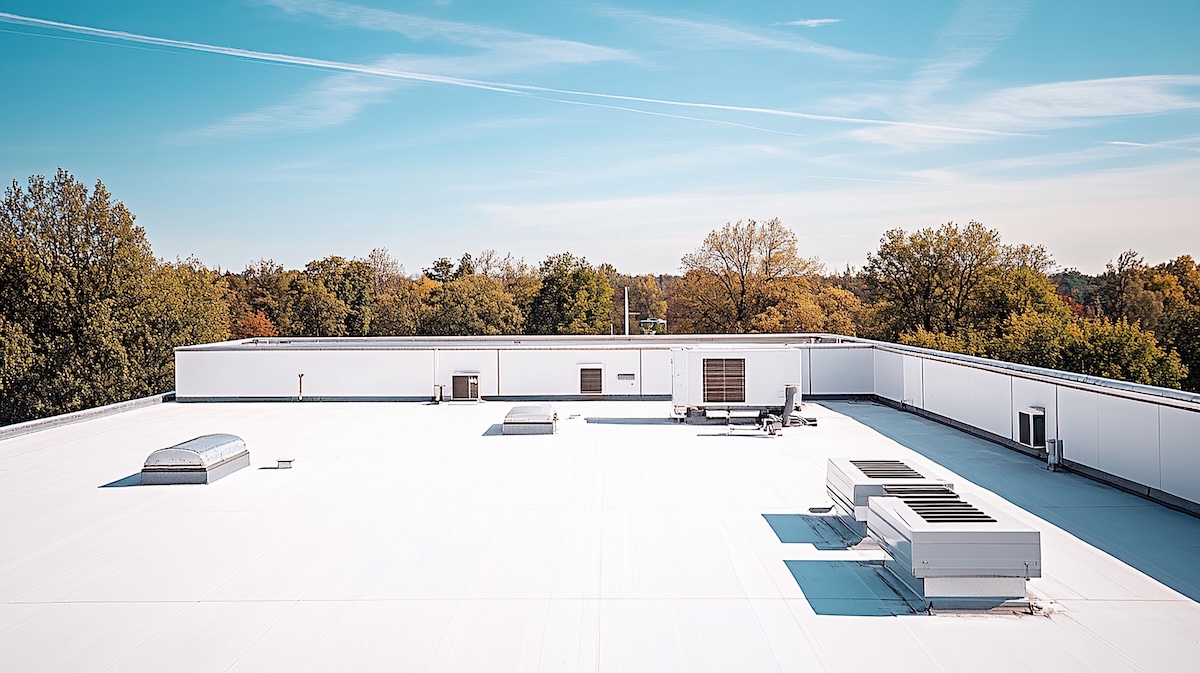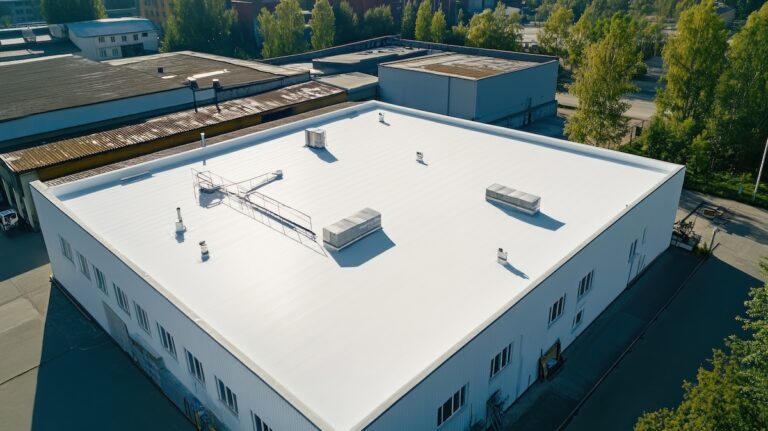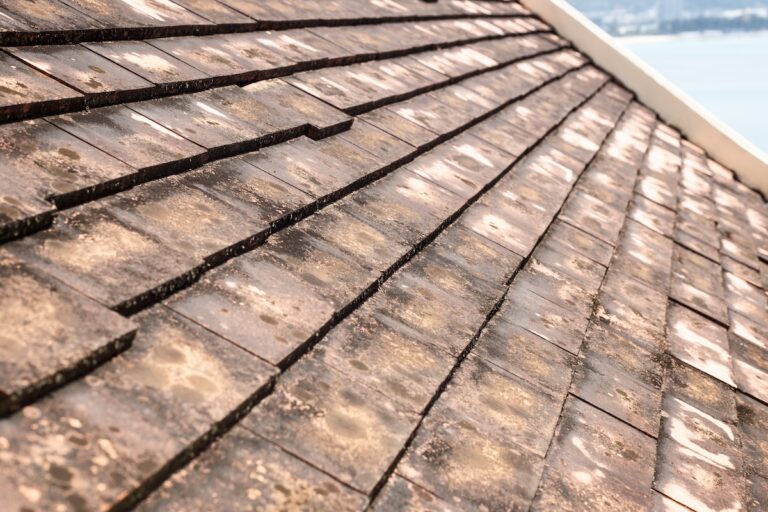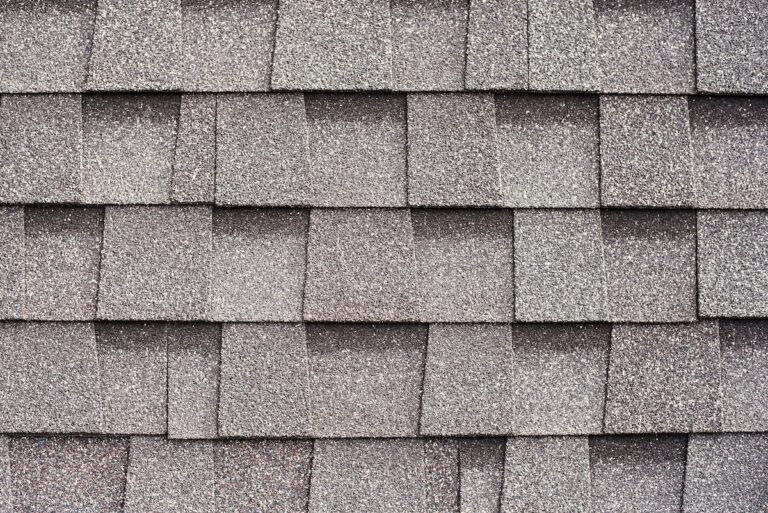When it comes to TPO roof repair, there’s good news for homeowners. TPO roofs, or Thermoplastic Polyolefin roofs, are not only popular for their durability and energy efficiency, but they’re also repairable in many cases. Whether your TPO membrane has sustained minor damage from UV rays or has small punctures, with the proper tools and techniques, you can extend the life of your roofing system.
This guide will walk you through everything you need to know about TPO roof repair, including:
- Understanding the structure and benefits of a TPO roof.
- Identifying common damages and whether they can be repaired.
- Following a 5-step guide to patch your TPO roof safely and effectively.
By following this guide, you can handle minor repairs on your TPO membrane or understand when it’s time to call in commercial roofing professionals, like G. Cannon Roofing, for expert assistance.
What is a TPO Roof?
A TPO roof is a single-ply roofing membrane that’s widely used on residential and commercial flat or low-slope roofs. Its popularity stems from its energy efficiency, durability, and cost-effectiveness. If you’d like to understand the full TPO roofing installation process, our experts explain each step to ensure maximum durability and energy efficiency.

Benefits of TPO Roofs
TPO roofing systems offer several advantages:
- 💡 Energy Efficiency: TPO membranes reflect UV rays, helping to maintain cooler indoor temperatures and lowering energy bills.
- 💪 Durable Materials: They are resistant to tears, punctures, and impacts, making them a long-lasting solution for a roofing system.
- 💵 Cost-Effective: Compared to some other single-ply membranes, TPO provides excellent value for its price.
Common Issues That Require TPO Roof Repair
Over time, even the most durable roofing system can experience some wear and tear. Here are the most common issues homeowners encounter with TPO roofs:
- Punctures and Tears: Foot traffic, falling branches, or sharp tools can create small punctures in the roofing membrane.
- Seam Failures: The heat-welded seams of TPO roofs can occasionally separate if improperly installed.
- UV Damage: While TPO is resistant to UV rays, prolonged exposure without proper maintenance can weaken the membrane.
Now that we understand the basics, let’s move on to how you can patch a TPO roof using our easy-to-follow guide. To minimize these issues, regular commercial flat roofing maintenance can help identify seam failures, punctures, or UV damage before they escalate.
Can You Patch a TPO Roof?
The short answer is yes—TPO roofs can be patched effectively when damages are minor. However, the success of the repair depends on the tools and techniques you use. Proper patching can prevent leaks, improve durability, and extend the lifespan of your roofing system.
Here’s a 5-step guide to TPO roof repair to help you get started.
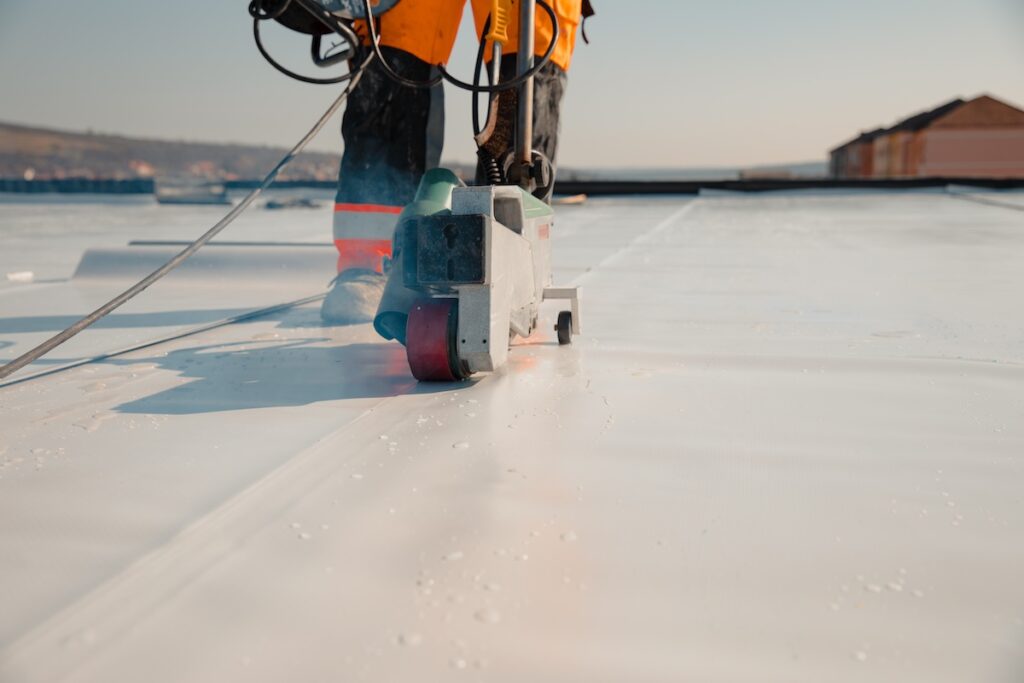
5 Steps to Patch a TPO Roof
1. Inspect the Roofing System
Before beginning any repairs, thoroughly inspect your TPO roof. Here’s what to look for:
- Punctures and Holes: Check for any visible tears or punctures caused by foreign objects or wear and tear.
- Seam Integrity: Inspect the welds along seams to ensure they’re not separating.
- Signs of UV Damage: Look for discoloration or brittleness caused by prolonged exposure to UV rays.
Taking the time to identify the extent of the damage will help you determine if a patch is appropriate or if more extensive repairs are necessary. If you’re unsure, our roofing professionals in Blue Bell can perform a complete inspection to assess your TPO system’s condition.
2. Clean the Damaged Area
Cleaning is essential to ensure the patch adheres properly. Follow these steps:
- Remove dirt, debris, and grease using a gentle cleaning solution.
- Rinse the area with water and allow it to dry thoroughly.
A clean surface ensures a watertight seal and prevents long-term issues.
3. Cut and Prepare the TPO Patch
Using a compatible piece of TPO roofing material:
- Cut the patch, ensuring it is at least 2-3 inches larger than the damaged area.
- Round the corners to prevent peeling or lifting over time.
4. Apply the Patch
To adhere the patch, use a hot-air welder, which is the standard tool for TPO roofing installation and repair. Here’s how:
- Preheat the hot-air welder.
- Position the patch over the damaged area.
- Slowly and evenly heat both the damaged roof membrane and the underside of the patch until they merge.
- Use a roller to firmly press the patch into place, removing any air bubbles.
5. Check the Seal
Once the patch has cooled and set, inspect the seal to ensure no edges are lifting. You can also test the watertightness by spraying water over the area and checking for leaks.
By following these steps, you can handle small repairs efficiently while minimizing the risk of further damage.
When to Call a Professional
While minor damages can often be repaired on your own, some situations require professional help:
- Extensive Damage: If over 10% of the TPO membrane is damaged, repairing may not be cost-effective.
- Severe Seam Failures: Improperly sealed seams can compromise the integrity of your entire roofing system.
- Signs of Aging: If the roof appears brittle or worn out, patching may only be a temporary fix.
Qualified roofing professionals can assess the condition of your roof, identify hidden issues, and recommend the most effective solutions to ensure long-term safety and performance.

How to Maintain Your TPO Roof
Preventive maintenance is key to extending the life of your TPO roof. Here are a few tips to keep your roofing system in great shape:
- Schedule Regular Inspections: Have your roof inspected at least twice a year and after major storms.
- Clean Debris: Remove dirt, leaves, and branches regularly to prevent damage.
- Monitor Seams: Check seams for signs of separation and address them promptly.
Proper maintenance ensures you get the most out of your investment while preventing costly repairs down the line.
Why Choose G. Cannon Roofing for TPO Roof Repair?
When it comes to your home, you deserve the best. Our commitment to excellent service means we work with you every step of the way, ensuring your roof stands the test of time. Whether you’re dealing with minor leaks or need a complete membrane replacement, our commercial roofing in Eagleville team has the expertise and tools to ensure your TPO roof performs at its best.
Don’t take chances with your TPO roof—trust G. Cannon Roofing to protect your home and investment.
